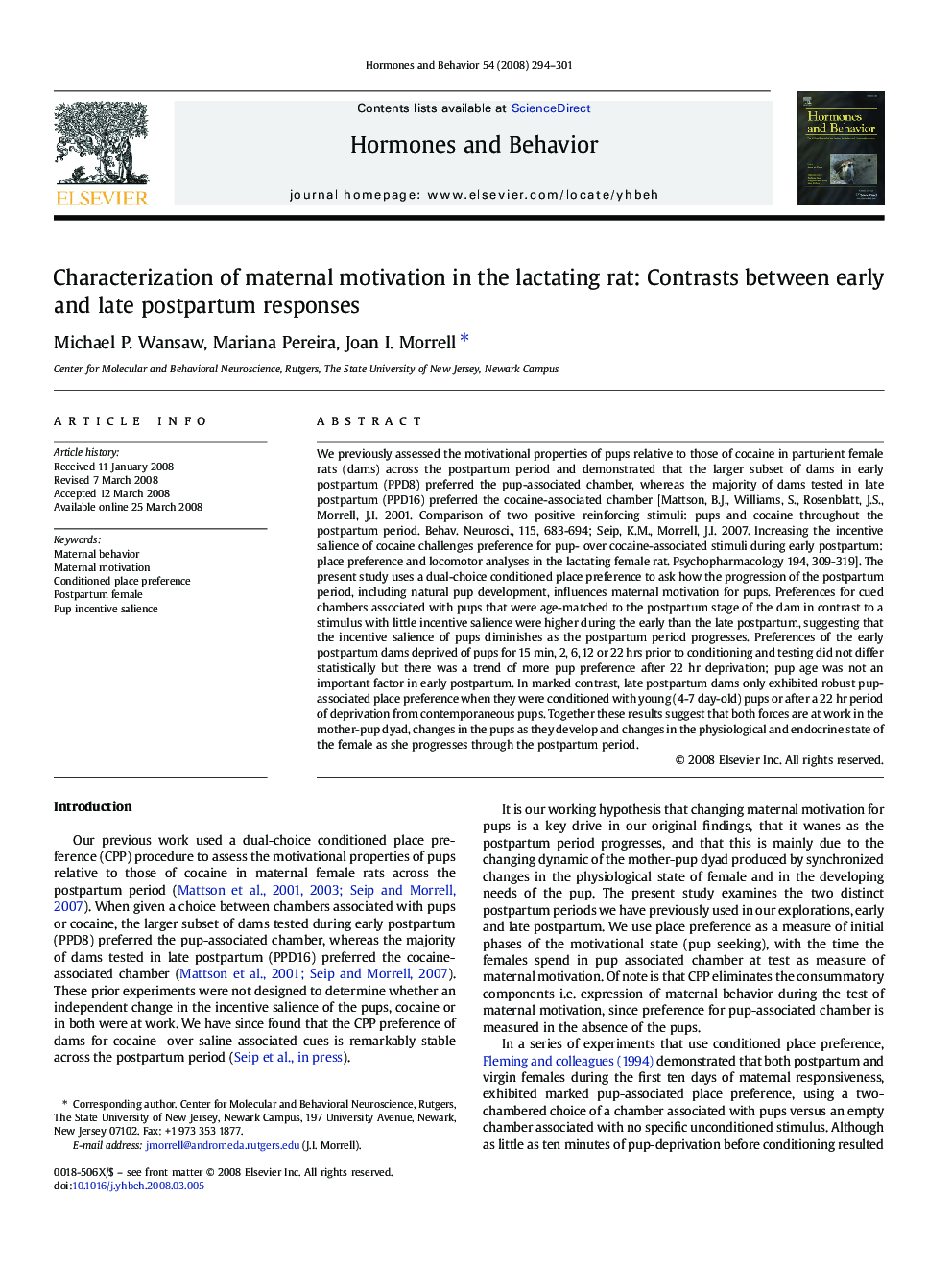| Article ID | Journal | Published Year | Pages | File Type |
|---|---|---|---|---|
| 323772 | Hormones and Behavior | 2008 | 8 Pages |
We previously assessed the motivational properties of pups relative to those of cocaine in parturient female rats (dams) across the postpartum period and demonstrated that the larger subset of dams in early postpartum (PPD8) preferred the pup-associated chamber, whereas the majority of dams tested in late postpartum (PPD16) preferred the cocaine-associated chamber [Mattson, B.J., Williams, S., Rosenblatt, J.S., Morrell, J.I. 2001. Comparison of two positive reinforcing stimuli: pups and cocaine throughout the postpartum period. Behav. Neurosci., 115, 683-694; Seip, K.M., Morrell, J.I. 2007. Increasing the incentive salience of cocaine challenges preference for pup- over cocaine-associated stimuli during early postpartum: place preference and locomotor analyses in the lactating female rat. Psychopharmacology 194, 309-319]. The present study uses a dual-choice conditioned place preference to ask how the progression of the postpartum period, including natural pup development, influences maternal motivation for pups. Preferences for cued chambers associated with pups that were age-matched to the postpartum stage of the dam in contrast to a stimulus with little incentive salience were higher during the early than the late postpartum, suggesting that the incentive salience of pups diminishes as the postpartum period progresses. Preferences of the early postpartum dams deprived of pups for 15 min, 2, 6, 12 or 22 hrs prior to conditioning and testing did not differ statistically but there was a trend of more pup preference after 22 hr deprivation; pup age was not an important factor in early postpartum. In marked contrast, late postpartum dams only exhibited robust pup-associated place preference when they were conditioned with young (4-7 day-old) pups or after a 22 hr period of deprivation from contemporaneous pups. Together these results suggest that both forces are at work in the mother-pup dyad, changes in the pups as they develop and changes in the physiological and endocrine state of the female as she progresses through the postpartum period.
